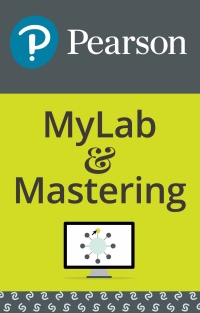Question
The individual financial statements for Gibson Company and Keller Company for the year ending December 31, 2021, follow. Gibson acquired a 60 percent interest in
The individual financial statements for Gibson Company and Keller Company for the year ending December 31, 2021, follow. Gibson acquired a 60 percent interest in Keller on January 1, 2020, in exchange for various considerations totaling $900,000. At the acquisition date, the fair value of the noncontrolling interest was $600,000 and Kellers book value was $1,200,000. Keller had developed internally a customer list that was not recorded on its books but had an acquisition-date fair value of $300,000. This intangible asset is being amortized over 20 years. Gibson uses the partial equity method to account for its investment in Keller.
Gibson sold Keller land with a book value of $55,000 on January 2, 2020, for $130,000. Keller still holds this land at the end of the current year.
Keller regularly transfers inventory to Gibson. In 2020, it shipped inventory costing $227,500 to Gibson at a price of $350,000. During 2021, intra-entity shipments totaled $400,000, although the original cost to Keller was only $240,000. In each of these years, 20 percent of the merchandise was not resold to outside parties until the period following the transfer. Gibson owes Keller $60,000 at the end of 2021.

-
Prepare a worksheet to consolidate the separate 2021 financial statements for Gibson and Keller.
-
How would the consolidation entries in requirement (a) have differed if Gibson had sold a building on January 2, 2020, with a $160,000 book value (cost of $340,000) to Keller for $300,000 instead of land, as the problem reports? Assume that the building had a 10-year remaining life at the date of transfer.


Sales Cost of goods sold Operating expenses Equity in earnings of Keller Net income Retained earnings, 1/1/21 Net income (above) Dividends declared Retained earnings, 12/31/21 Cash Accounts receivable Inventory Investment in Keller Land Buildings and equipment (net) Total assets Liabilities Common stock Additional paid-in capital Retained earnings, 12/31/21 Total liabilities and equities Gibson Company Keller Company $ (1,000,000) $ (700,000) 700,000 500,000 190,000 55,000 (87,000) $ (197,000) $ (145,000) $ (1,316,000) $ (720,000) (197,000) (145,000) 125,000 70,000 $ (1,388,000) $ (795,000) $ 189,000 $ 60,000 396,000 610,000 590,000 520,000 1,017,000 170,000 590,000 516,000 500,000 $ 2,878,000 $ 2,280,000 $ (700,000) $ (885,000) (790,000) (520,000) (80,000) (1,388,000) (795,000) $ (2,878,000) $ (2,280,000) 0 Accounts Keller Debit Credit Noncontrolling Interest $ 400,000 Gibson $ (1,000,000) 700,000 190,000 (87,000) $ (197,000) 424,500 $ (700,000) 500,000 55,000 0 $ (145,000) Consolidated Totals $ (1,300,000) 807,500 260,000 0 32,000 15,000 87,000 (49,000) $ 232,500 49,000 $ (183,500) X $ (1,217,300) $ (1,316,000) 98,700 720,000 42,000 28,000 Sales Cost of goods sold Operating expenses Equity in earnings of Keller Separate company net income Consolidated net income To noncontrolling interest To Gibson Company Retained earnings, 1/1/21Gibson Retained earnings, 1/1/21Keller Net income Dividends declared Retained earnings, 12/31/21 Cash Accounts receivable Inventory Investment in Keller Land Buildings and equipment (net) Customer list Total assets Liabilities Common stock Additional paid-in capital Retained earnings, 12/31/21 Noncontrolling interest 1/1/21 Noncontrolling interest 12/31/21 Total liabilities and equity (197,000) 125,000 $ (1,388,000) $ 189,000 396,000 590,000 1,017,000 170,000 516,000 (720,000) (145,000) 70,000 $ (795,000) $ 60,000 610,000 520,000 (183,500) 125,000 $ (1,275,800) $ 249,000 946,000 1,078,000 60,000 32,000 1,059,000 75,000 42,000 590,000 500,000 285,000 15,000 685,000 1,016,000 270,000 $ 4,244,000 $ (1,525,000) (790,000) $ 2,878,000 $ (700,000) (790,000) $ 2,280,000 $ (885,000) (520,000) (80,000) (795,000) 60,000 520,000 80,000 (1,388,000) 632,200 (1,275,800) (632,200) X (653,200) (653,200) $ (4,244,000) $ (2,878,000) (2,280,000) $ 2,339,700 $ 2,339,700 Answer is not complete. Complete this question by entering your answers in the tabs below. Required A Required B How would the consolidation entries in requirement (a) have differed if Gibson had sold a building on January 2, 2020, with a $160,000 book value (cost of $340,000) to Keller for $300,000 instead of land, as the problem reports? Assume that the building had a 10-year remaining life at the date of transfer. (Do not round intermediate calculations. If no entry is required for a transaction/event, select "No journal entry required" in the first account field.) Show less No Accounts Debit Credit Transaction 1 1 Retained earnings Buildings Accumulated depreciation 40,000 2 2. N Accumulated depreciation Operating expenses
Step by Step Solution
There are 3 Steps involved in it
Step: 1

Get Instant Access to Expert-Tailored Solutions
See step-by-step solutions with expert insights and AI powered tools for academic success
Step: 2

Step: 3

Ace Your Homework with AI
Get the answers you need in no time with our AI-driven, step-by-step assistance
Get Started


